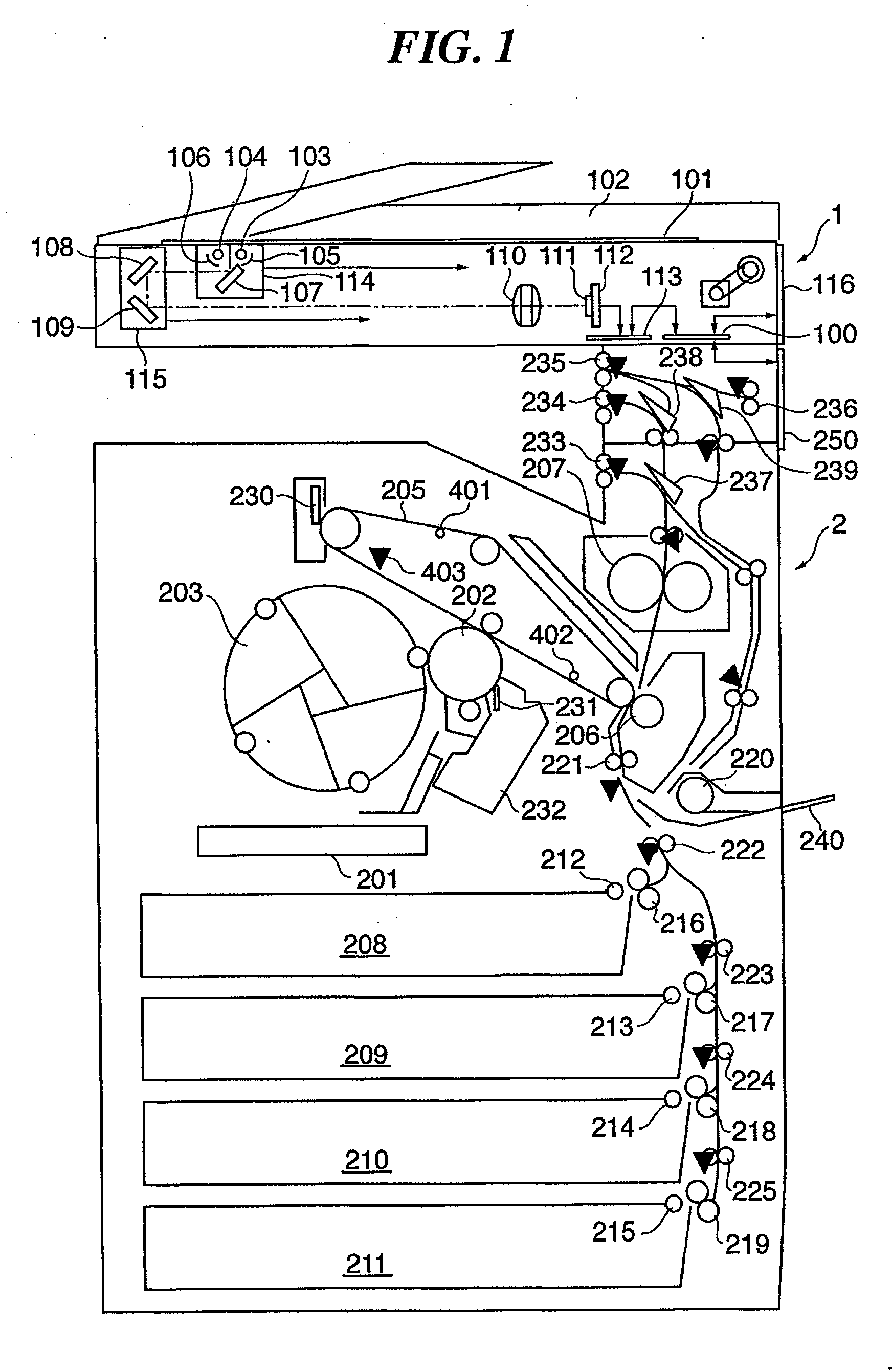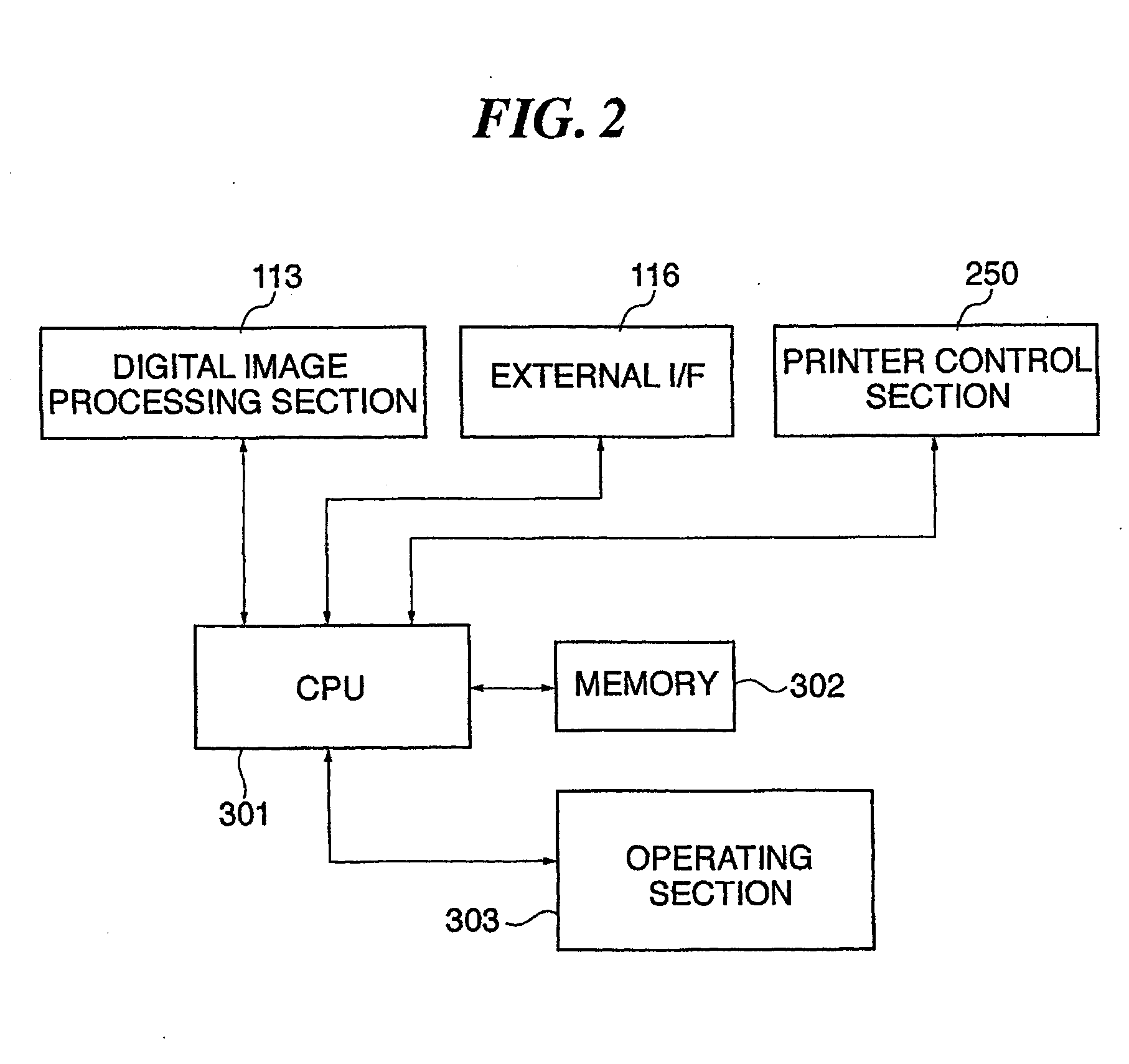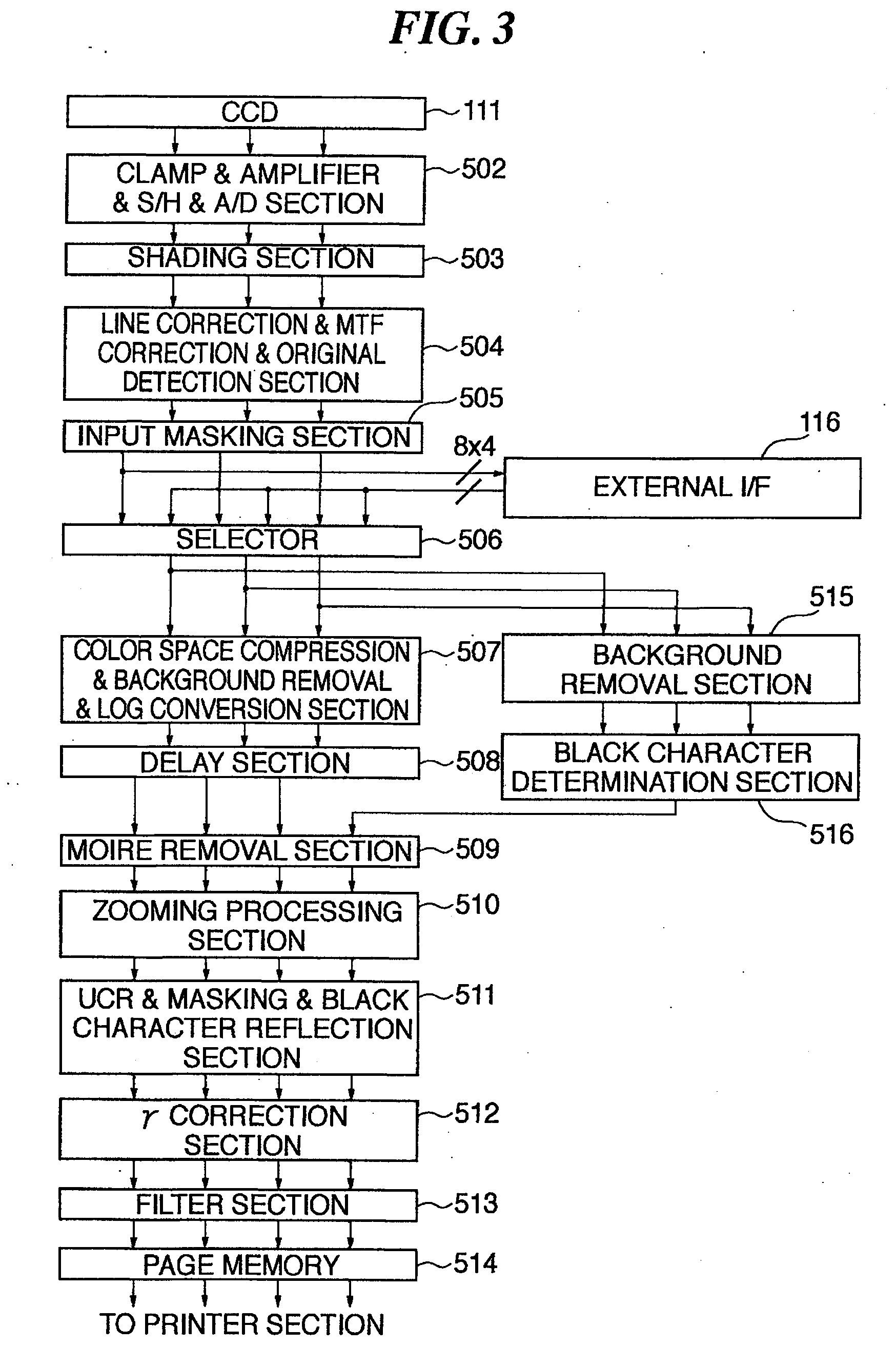Image forming apparatus and control method therefor
a technology of image forming apparatus and control method, which is applied in the direction of recording apparatus, instruments, electrographic process, etc., can solve the problems of reducing the productivity of the image forming apparatus, unable to obtain unable to achieve the output of image formation, etc., to suppress the reduction in productivity and excellent images
- Summary
- Abstract
- Description
- Claims
- Application Information
AI Technical Summary
Benefits of technology
Problems solved by technology
Method used
Image
Examples
first embodiment
[0063]FIG. 1 is a schematic cross-sectional view of an image forming apparatus according to the present invention. This image forming apparatus functions as a full-color image forming apparatus, and is comprised of a color reader section 1 and a color printer section 2.
[0064] First, a description will be given of the color reader section 1. On an original platen glass 101 of the color reader section 1, there is mounted an automatic original feeder (ADF) 102 that automatically feeds originals onto the original platen glass 101. It should be noted that the image forming apparatus may be provided with a mirror pressure plate, not shown, or a white pressure plate, not shown, in place of the automatic original feeder 102. A carriage 114 accommodates light sources 103 and 104, reflectors 105 and 106, and a mirror 107. The light sources 103 and 104 are implemented by halogen lamps, fluorescent lamps, xenon lamps, or the like, and illuminate an original on the original platen glass 101.
[00...
second embodiment
[0125] In the following, a description will be given of an image forming apparatus according to the present invention.
[0126] The apparatus according to the present embodiment is basically identical to the image forming apparatus according to the first embodiment, and hence only different points will be described.
[0127] As distinct from the first embodiment in which the mark sensors 403 and 404 dedicated to the respective individual detections of the first and second HP marks 401 and 402 marked in the intermediate transfer member 205 are provided, as shown in FIG. 4, in the second embodiment, only a single mark sensor 1103 common to first and second HP marks 1101 and 1102 is provided in the intermediate transfer member 205 as shown in FIG. 11.
[0128] Similarly to the first and second HP marks 401 and 402 in the first embodiment, the first HP mark 1101 and the second HP mark 1102 are marked in the intermediate transfer member 205 in a manner separated from each other by half the circ...
PUM
| Property | Measurement | Unit |
|---|---|---|
| distance | aaaaa | aaaaa |
| circumference | aaaaa | aaaaa |
| longitudinal length | aaaaa | aaaaa |
Abstract
Description
Claims
Application Information
 Login to View More
Login to View More - R&D
- Intellectual Property
- Life Sciences
- Materials
- Tech Scout
- Unparalleled Data Quality
- Higher Quality Content
- 60% Fewer Hallucinations
Browse by: Latest US Patents, China's latest patents, Technical Efficacy Thesaurus, Application Domain, Technology Topic, Popular Technical Reports.
© 2025 PatSnap. All rights reserved.Legal|Privacy policy|Modern Slavery Act Transparency Statement|Sitemap|About US| Contact US: help@patsnap.com



